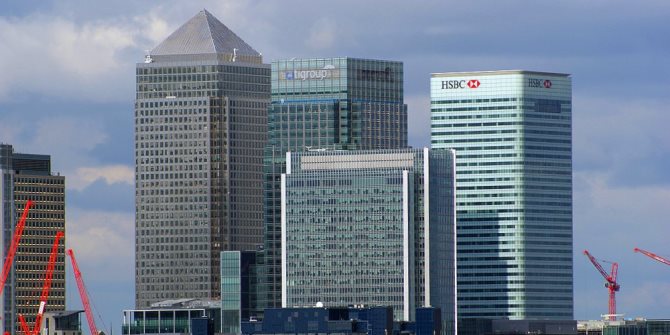 The Chancellor in his Spending Review speech reminded that government spending in 2010 was not one they could sustain (45 per cent). He said the figure is currently just under 40 per cent and is expected to be 36.5 per cent by the next Review – a level that a “competitive, modern, developed economy can sustain”. But there is no “optimal” size for the state, explains Linda Yueh.
The Chancellor in his Spending Review speech reminded that government spending in 2010 was not one they could sustain (45 per cent). He said the figure is currently just under 40 per cent and is expected to be 36.5 per cent by the next Review – a level that a “competitive, modern, developed economy can sustain”. But there is no “optimal” size for the state, explains Linda Yueh.
“Unsustainable” is how the Chancellor described the size of the state in Britain in the latest Spending Review and Autumn Statement. A similar description was given by the German Chancellor Angela Merkel about government spending in the European Union, notably on welfare.
But, actually, there isn’t an “optimal” size for the state. Looking around the world, government spending as a share of GDP, from 2000-2010, ranged from around 20 per cent in Asia to nearly 50 per cent in the EU on average.
Average government expenditure (%GDP)
| China | 19.4 |
| Developing Asia | 21.4 |
| ASEAN-5 | 22.5 |
| Sub-Saharan Africa | 27.0 |
| Emerging economies | 27.7 |
| Latin America | 29.9 |
| Middle East/North Africa | 31.5 |
| United States | 37.8 |
| Central and Eastern Europe | 39.8 |
| European Union | 46.5 |
Reproduced from my article in the Oxford Review of Economic Policy
The Chancellor says that UK government spending was 45 per cent of GDP when he took office, which was too high. It’s now less than 40 per cent and forecast to reach 36.5 per cent by the end of the Spending Review period.
To judge this statement depends on a number of factors. For instance, if government revenues are expected to average between 35-37 per cent of GDP, then spending higher than this level will result in a fiscal deficit. The figures from the Office for Budget Responsibility (OBR) from the latest report and also earlier ones show that tax receipts and other government revenues don’t exceed 40 per cent of GDP.
So, in that sense, there’s an issue of sustainability if government spending perennially exceeds revenues.
And the revenue side looks remarkably stable. According to the OBR, this level of revenues isn’t expected to change in the next 50 years. By 2064/65, government revenues are expected to be 35.9 per cent of GDP.
Of course, the reasons for the growth of the state also matter. It’s not just due to the aftermath of the banking crisis. Government spending had been growing before the crisis, which suggests a structural change and therefore the current government’s efforts to reverse it is also an effort to re-shape the size and composition of the state’s role in the economy.
With the cuts, the UK is looking closer in size to the United States, and farther from other European nations. The welfare state, though, means that Western nations won’t, and may not want to, move toward the Asian small state model. With an ageing population in the West, that’s unlikely in any case. But, today’s plans by the Chancellor shows that the UK state is being reconfigured, and the voters will decide in five years’ time if they like what they see.
__
Note: This article was first published on our sister site, LSE Business Review. It is partly based on the author’s paper The Chinese box: the opaque economic borders of the Chinese state.
___
About the Author
 Linda Yueh is Fellow in Economics at St Edmund Hall, University of Oxford, Adjunct Professor of Economics at London Business School, and Visiting Professor of Economics at Peking University. Dr. Yueh is a member of the Policy Committee of the Centre for Economic Performance (CEP) at the London School of Economics and Political Science (LSE), and an Advisory Board member of The Official Monetary and Financial Institutions Forum (OMFIF). She has advised the World Bank, European Commission, Asian Development Bank, World Economic Forum, among others. She is the Editor of the Economic Growth and Development book series at Rutledge, and a widely published author. She is also a broadcaster, including for the BBC.
Linda Yueh is Fellow in Economics at St Edmund Hall, University of Oxford, Adjunct Professor of Economics at London Business School, and Visiting Professor of Economics at Peking University. Dr. Yueh is a member of the Policy Committee of the Centre for Economic Performance (CEP) at the London School of Economics and Political Science (LSE), and an Advisory Board member of The Official Monetary and Financial Institutions Forum (OMFIF). She has advised the World Bank, European Commission, Asian Development Bank, World Economic Forum, among others. She is the Editor of the Economic Growth and Development book series at Rutledge, and a widely published author. She is also a broadcaster, including for the BBC.
Featured image credit: Michael D Beckwith CC BY 2.0







